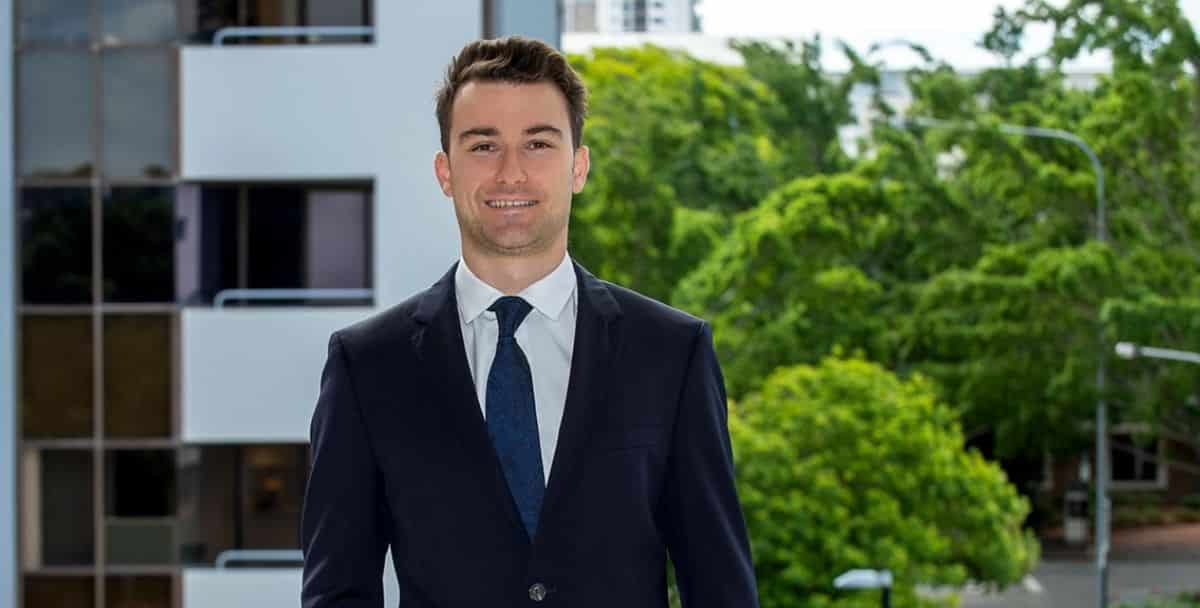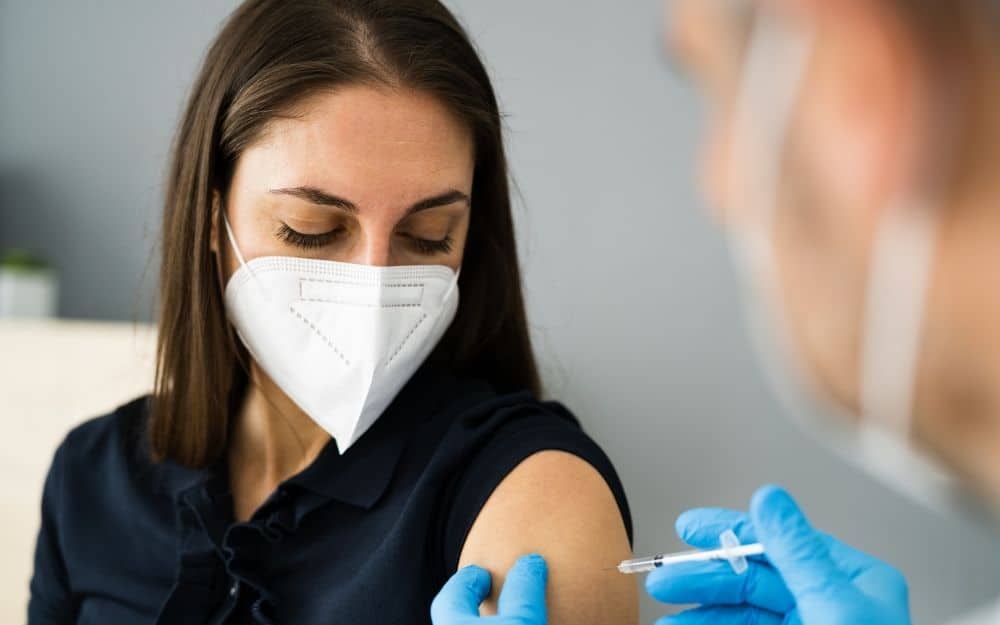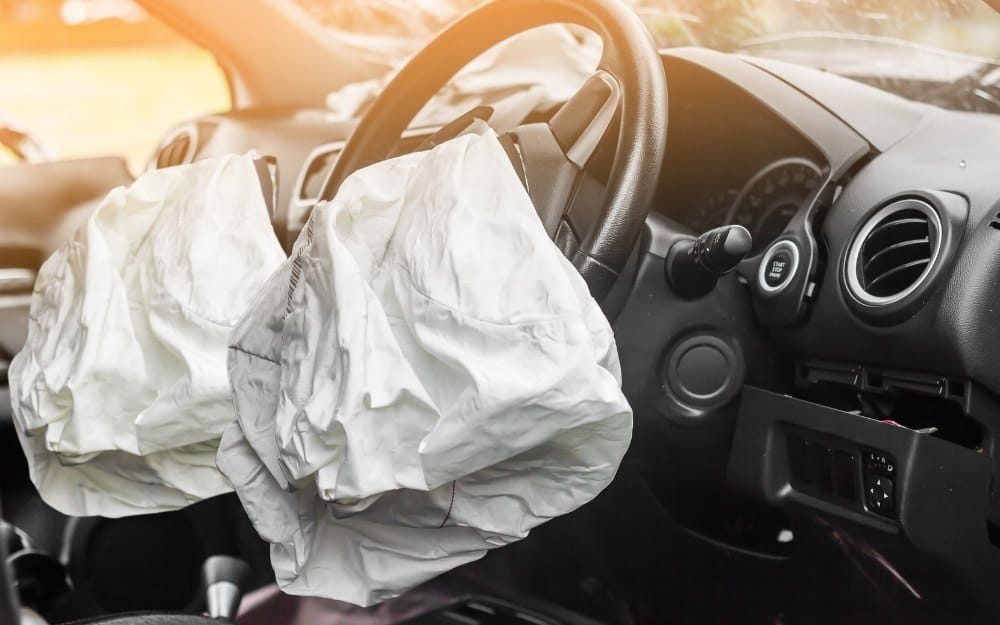
In this video, Samuel Layani, Solicitor at OMB Solicitors, defines sports injury claims and discusses what they are.

In this video, Samuel Layani, Solicitor at OMB Solicitors, defines sports injury claims and discusses what they are.

Since COVID-19 vaccination conspiracy theories have flooded social media, political campaigns and patient advocacy groups, one question remains unanswered and that is, who is liable in the event one develops adverse side-effects from the vaccine?
Australia has a long-standing compulsion for systematic and routine vaccines that are at times a legislative requirement. These include, ‘No Jab No Pay’ and ‘No Jab No Play’ in some Australian states. While some vaccines may be mandated, Australia does not provide a no-fault injury compensation scheme for rare vaccine injuries.
A no-fault vaccine compensation scheme recompenses individuals who have sustained an injury following the administrations of a certified manufactured vaccine.
Australia in contrast to its international counterparts, the USA, UK and New Zealand, does not have a no-fault vaccine compensation scheme. This means that an individual that sustains a vaccine-related injury must bear the associated costs in accessing treatment via our publicly funded health systems and will not obtain any compensation for their pain and suffering. As a result, those affected are forced to embark on a complex and expensive litigation process to seek compensation and related expenses.
Australia currently has a fault-based system for handling negligence claims. The process is long and arduous and can take years to be settled or decided. The issue associated with the current fault-based system is that settlement may not cover long-term costs associated with care and other expenses.
Recently, Prime Minister Scott Morrison announced a new vaccine indemnity scheme. This scheme means that health practitioners that have been found liable as a result of adverse events from administering the COVID-19 vaccines will be compensated by the Commonwealth of Australia.
It is well established that Pfizer is the vaccine of choice for under-60’s in Australia. However recently, the national cabinet stated that “GPs can continue to administer the AstraZeneca to Australians under 60 years of aged with informed consent”.
The real implementation of the indemnity scheme, therefore, is design to support allied health practitioners and reduce the real and perceived impediments in administering the AstraZeneca vaccine to the under-60’s population. It seeks to shift exposure to possible claims from existing insurers to the Commonwealth of Australia.
However, this does not negate nor prohibit patients from suing health practitioners for negligent advice in relation to the purported risks and benefits of a particular vaccine.
This falls well short of a no-fault injury compensation scheme to allow for compensation award to include income indemnities, reimbursement of medical expenses, personal assistance expenses and travelling expenses that be resultant of the vaccination injury.
The current use of ‘first in human’ phase III clinical trial rollout makes it foreseeable albeit rare that a vaccine-related injury may occur. Notably, rare vaccine injury is not a new phenomenon. Guillain-Barre syndrome is another rare vaccine-related injury that is caused by the influenza vaccine.
With the current climate and public questioning the safety of the vaccine as a result of blood clots occurring from the AstraZeneca vaccine, one would think that the Australian Government ought to implement a no-fault vaccination scheme. Of course, if it is the proposition of the Government that being vaccinated is for the benefit of society, society should be safeguarded from the possible risk of a vaccine injury. It follows that the Australian Government should recompense individuals who fall victim to a vaccine-related injury.
The implementation of a no-fault vaccination scheme could increase public trust in the system rather than undermine current hesitancy and lack of confidence in the vaccine program. Hence, it would be timely that Australia now legislates and introduce a no-fault compensation scheme for all vaccinations. This is a crucial step in navigating a pathway forward from the COVID-19 pandemic.

Covid-19 has had a significant effect on our global situation and the way in which we are required to adapt to what is now considered a new normal way of life. Specifically, in the legal sphere of workers compensation and personal injury litigation; employers, insurers and lawyers are faced with the challenge of arranging independent medical examinations’ (“IME“) with social distancing measures and government health directives affecting how they proceed.
However, one takeaway from the COVID-19 crisis is the opportunity of finding newfound solutions and creative services to deliver safe and defendable mechanisms to assist injured or ill people return to work and/or functioning capacity. As such, telehealth (albeit by video conference or by telephone) for IME’s has become an essential development to ensure the continuing progress of litigation during the current pandemic.
Telehealth is one of the many terms used to describe the application of technology to provide non-face-to-face contact with patients. Other terms include “telemedicine” and “e-health”. Telehealth services include, but are not limited to, remote doctor and other specialists, psychologists, occupational therapists and patient consultation via video link or telephone. Telehealth is not just a technological advancement. It is the solution to assist workflow and also patients to be assessed at in the comfort of their own home.
A recent decision in the Supreme Court of Rockhampton, Tyndall v Kestral Coast Pty Ltd [2020] QSC 56, dealt with whether the request for IME both by a rheumatologist and vascular surgeon via telehealth was unnecessary.
Crow J ordered that “in the event that the Plaintiff is unable to personally attend the examination due to COIVID-19 travel restrictions, the assessment is to be undertaken by video conference and the plaintiff is to submit to any pathology as requested by the [specialist]”. This demonstrates the Courts willingness to adapt and work with social distancing restrictions.
The Australian Government has introduced temporary telehealth services to the Medicare Benefits Schedule (MBS). This is separated into three categories, namely face-to-face, video-conferencing, and tele-conferencing when videoconferencing is not an available means of service. Allied health services have experienced a significant influx in the demand for the MBS telehealth consultation, of which half of these consultation were conducted via videoconferencing. Evidenced by the recent decision and move with telehealth in general, it seems that post-pandemic, telehealth may well be here to stay and will continue its advancement to facilitate the new norm for clinicians and patients alike.
There are many ways in which IME’s can take place.
OMB Goal Coast solicitors work closely with health care providers to ensure that you are the centre of care and your workers compensation claim or personal injury matter is a smooth experience. Our Gold Coast Lawyers here at OMB Solicitors will ensure that you are provided with the best available treatment providers and, if needed, your independent medical assessment is conducted within the comfort of your own home.
For more advice, please contact a member of the OMB Insurance team to speak with one of our friendly staff and discuss how we may be able to assist you with Lawyers Gold Coast.

If you have suffered an injury whilst out and about and are considering your options and what to do next, here are 9 reasons why you should consider seeking legal advice to assist you in seeking compensation:
In Queensland, the legal process which may need to be followed after someone has suffered the injury in a public place is set out in the Personal Injuries Proceedings Act 2002 (QLD) (‘the Act’). The Act provides a number of ‘Pre-Court’ procedures that must be followed before you can step foot in a courtroom. These procedures can be extensive so it may be helpful to seek legal assistance.
If you have suffered an injury in a public place or as an invitee on a premises, Section 9 of the Act provides you with nine (9) months to serve the person who caused your injury (‘the Respondent’) with a Notice of Claim. The nine (9) month period will begin from the date of the incident which caused your injury or from the date you first begin to suffer symptoms from your injury. If you do not give the Notice of Claim within this time, you will be required to provide a reasonable excuse for the delay. If you decide to seek legal advice, a Notice of Claim must then be provided one (1) month after you have instructed a lawyer to assist you. We do recommend that you seek legal assistance when drafting your Notice of Claim.
Following receipt of the Notice of Claim, the Act provides that the Respondent must provide a response to confirm whether they consider themselves to be a proper respondent (Section 10) and whether the Notice of Claim complies with the requirements of the Act (Section 12). We recommend seeking legal assistance to make sure you take the correct steps and can provide an appropriate reply, to any response suggesting that the Respondent is not the proper respondent or that the Notice of Claim is not compliant.
After you have provided the Notice of Claim, Section 20 of the Act, allows the Respondent six (6) months to investigate the incident and provide a liability response. The liability response will give notice as to whether the Respondent admits liability for the incident or denies that they should be held responsible. The liability response should also contain an offer to settle your claim reflecting the Respondent’s position.. Should the Respondent deny liability, you will be required to gather evidence justifying why they are liable and should be required to pay you compensation for your injuries.
In order to receive compensation for a personal injury, you will be required to gather evidence showing what injury you have suffered and how it has affected you and your health and day to day life. This will include obtaining medical records from any and all medical treatment providers (doctors, specialists, surgeons) you have attended both before and after the incident. You also may consider undergoing an independent medical examination to further illustrate the injury you have suffered and how it has affected you. Seeking legal assistance can help you gather these records and consider what evidence you may need to evince your injury.
During the course of the ‘Pre-Court’ procedures, you and the Respondent will be required to comply with disclosure obligations. This means that you must provide the Respondent with documents you obtain that are relevant to the facts in issue to your claim. Failure to comply with these obligations can be considered by the courts and negatively affect your claim. We recommend seeking legal assistance to ensure any evidence gathered is disclosed in accordance with your obligations.
Before you are able to commence a proceeding in court, the Act requires you to attend a compulsory conference or a mediation with the Respondent – or give the reason as to why it is not appropriate. The compulsory conference will allow both parties to present their case and attempt to settle the claim through exchanging offers of settlement. We recommend seeking legal advice to assist you in participating in a compulsory conference so that your case is presented as best it can be and appropriate offers of settlement are exchanged.
In Queensland, you only have three (3) years to complete the ‘Pre-Court’ procedures and commence legal action in the courts for the personal injury you have suffered. This three (3) year period usually begins from the date your action arose, being the date of the incident. Occasionally, it may begin on the date your injury manifests, but at times, this distinction can be difficult to navigate. This limitation period is provided in the Limitation of Actions Act 1974 (QLD) and can only be extended under limited exceptions. The three (3) year limitation period also applies if you have suffered an injury in a motor vehicle accident, work accident or medical incident. It is important that you commence proceedings before this period lapses.
Instructing a lawyer to assist you to navigate the ‘Pre-Court’ procedures provided under the Act will allow you to obtain advice from an industry professional, interested in your claim and eager to assist you following your personal injury.
We recommend seeking legal advice if you suffer injury so that you can be assured your claim will follow the ‘Pre-Court’ procedures and requirements set out in the Act.
Contact Gold Coast Lawyers a member of the OMB Insurance team to speak with one of our friendly staff and discuss how we may be able to assist you.

Motor vehicle accidents can be unnerving and unpleasant experiences for most people involved. We understand that following an accident, it is likely that you will suffer from shock amongst a number of other possible injuries. However, there are 3 simple tips you should try to follow if you find yourself involved in a motor vehicle accident.
One of the most important things you should do following a motor vehicle accident is to take notes, pictures or videos of what has occurred. This should include taking the contact details (name, number and address) of the other driver or drivers involved, as well as the number plate, make and model of the other vehicle or vehicles involved in the accident. It is important to record the location of the accident which can include noting any close by roads or buildings if you are not sure of the specific address. It may also be helpful to record the time of day and weather conditions. Another thing to consider is to take the name and number of any witnesses to the accident who could be contacted at a later time to give an account of what happened.
Unfortunately, some motor vehicle accidents do require emergency transport to a hospital. If you suffer serious injury and require immediate transport for treatment, it can help if you are able to take note of the emergency services which attended and the hospital to which you are taken. If you do not need to attend the hospital immediately after a motor vehicle accident, it is still important that you to attend your GP or medical practitioner shortly after the accident or as soon as you begin to suffer pain or discomfort. When you attend a doctor, they will record the fact that you were involved in a motor vehicle accident and can begin to assess the injuries you may have suffered.
We understand that following a motor vehicle accident, it is common for the drivers involved to exchange details and handle the incident without the involvement of the police. However, it is important that after the accident you go to your local police station and report what has occurred. Police reports are very useful and are required should you decide to make a claim for compensation. The Police will provide you with what is known as a ‘QP’ number and this number will be necessary when making a claim.
These 3 tips can provide you with some initial guidance as to what you should do if you are involved in a motor vehicle accident. If your doctor advises that your injuries require ongoing treatment – whether significant treatment such as such as surgery, or more regular treatment such as physiotherapy – you may wish to consider making a claim for compensation to assist you with these costs. A claim for compensation can also help you recover lost wages, costs associated with care & assistance and also the costs associated with out of pocket expenses such as medications, travel and medical expenses .
Contact the Gold Coast Solicitors Team for an obligation free consultation if you are involved in a motor vehicle accident and want any further information or advice following a motor vehicle accident.

If you are involved in a motor vehicle accident – in Queensland – and decide to make a claim for compensation, the initial process is governed by the Motor Accident Insurance Act 1994 (QLD). This ensures that any claim made by any injured person follows the same process and involves the same steps.
The first step you have to take if you wish to make a claim for compensation following a motor vehicle accident is to serve the CTP Insurer of the other driver, commonly known as the Insured, with a Notice of Accident Claim Form. This form provides formal notice to the CTP Insurer of their Insured that you are seeking compensation for the accident which occurred, and contains all relevant information about the people and vehicles involved, the details of the accident and the injuries you have suffered.
It is important to remember that if you wish to make a claim for compensation, the Notice of Accident Claim Form must be served on the CTP Insurer within 6 months from the date of the motor vehicle accident. However, if you decide to consult a solicitor about the possibility of making a claim for compensation following a motor vehicle accident, you are then required to serve the Notice of Accident Claim Form within 1 month from the date you met with your Gold Cost lawyers.
After you have served the Notice of Accident Claim Form on the CTP Insurer, they will have 14 days to assess the Notice of Accident Claim Form and provide a compliance response. This is a formal response confirming that your claim for compensation is compliant with the requirements of the Motor Accident Insurance Act 1994 (QLD). Once you have compliance, the CTP Insurer should then offer to meet your reasonable rehabilitation costs.
From the date of compliance, the CTP Insurer then has 6 months to undertake investigations into the accident. These investigations allow the CTP Insurer to fully understand the circumstances of the accident and to determine whether they admit or deny liability for the accident. During this time, you should consider getting further and formal medical assessments of your injuries, and gathering information about the damage you may claim, such as lost wages and medical or pharmaceutical expenses.
After the 6-month investigation period has passed, the CTP Insurer has to provide notice as to whether they accept liability for the accident. It is at this time that they will likely also attempt to make an assessment of your damages and attempt to resolve your claim through making you a written offer of settlement. With any offer made by the CTP Insurer, it is important that you understand the process and the offer being made.
When any offer is made, it is important to make sure that the offer includes everything you may be entitled to claim as any settlement is a once and for all settlement. For this reason, an injured person may choose to seek assistance and advice when negotiating a settlement
It is common that the parties involved in a motor vehicle accident will attend a compulsory conference to discuss the accident and their offers of settlement. Claims for compensation are commonly settled at this stage, however if you do not accept the offer of settlement, you will then have to make a formal Claim for damages in Court.
The process involved in making a claim for compensation following a motor vehicle accident has been streamlined by the Motor Accident Insurance Act 1994 (QLD) however we understand can still be an overwhelming and confusing. If you have been involved in a motor vehicle accident and are considering making a claim for compensation or have any questions about what is involved in making a claim for compensation, contact our OMB Gold Coast Lawyers team for an obligation free consultation.